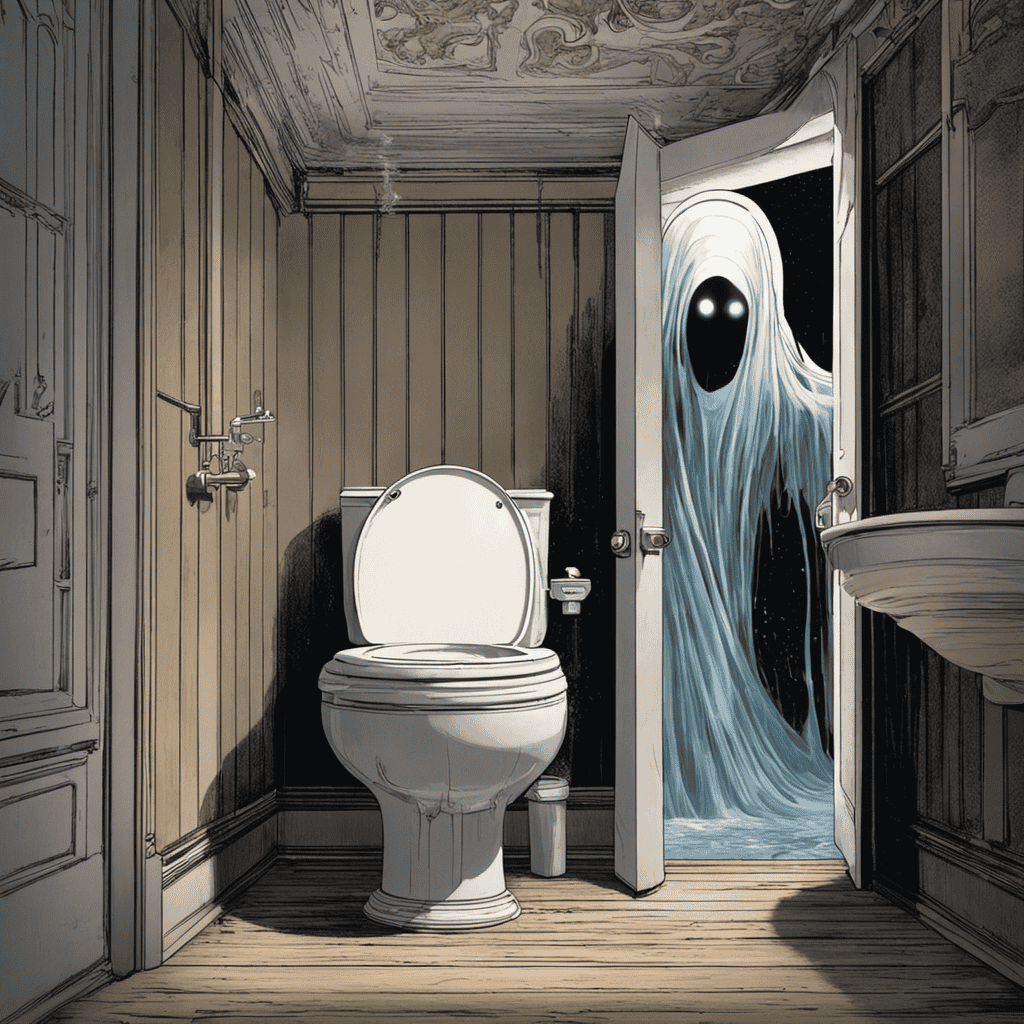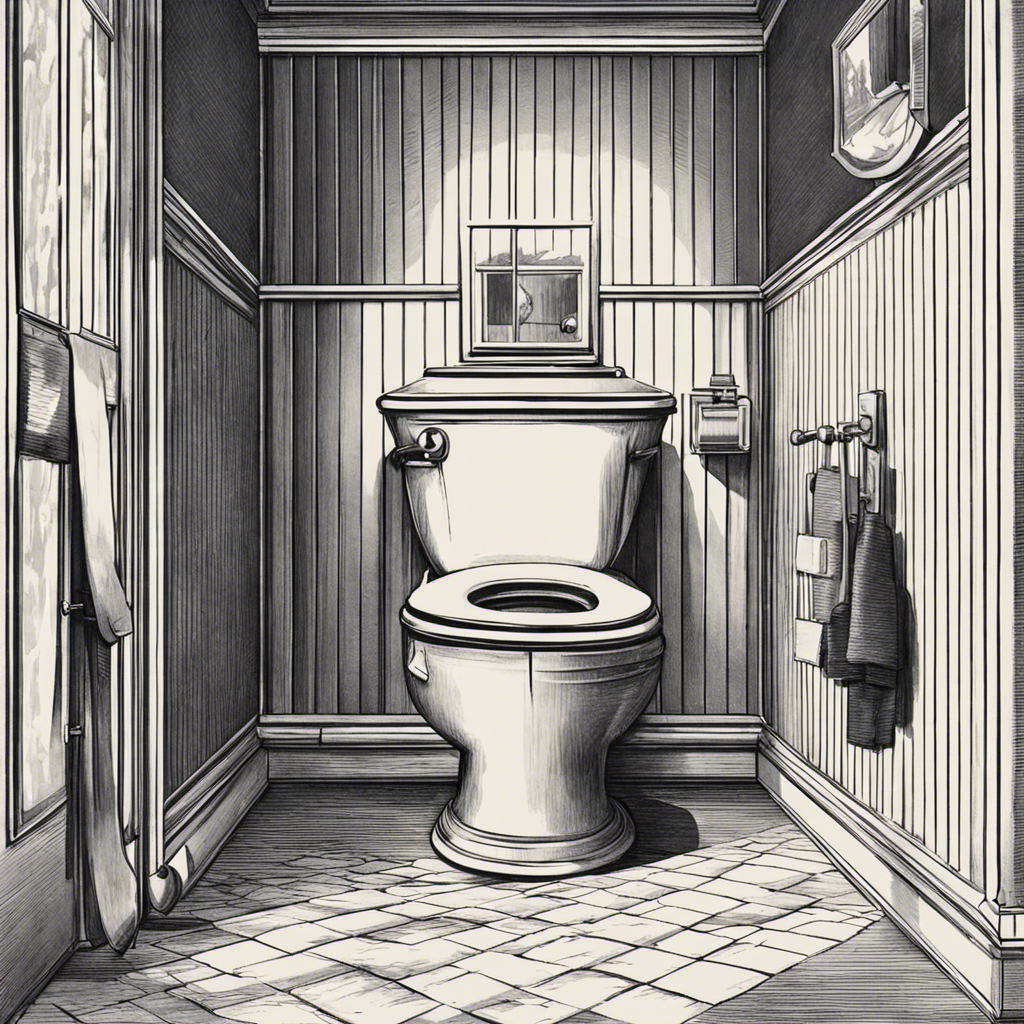As I stand here, listening to the incessant sound of water running in the background, I can’t help but wonder: why does the toilet run randomly?
It’s a frustrating problem that many of us have encountered, but fear not, for I am here to shed some light on this mysterious issue.
In this article, we will delve into the common causes of a randomly running toilet, from a faulty flapper to an overfilled float and even a broken fill valve.
So, join me as we unravel the inner workings of your toilet and learn how to put an end to its random escapades.
Key Takeaways
- A faulty flapper and misaligned flapper chain can cause a randomly running toilet.
- An overfilled float and broken fill valve can also contribute to a running toilet.
- Water pressure fluctuations can be a possible reason for a randomly running toilet.
- A faulty flush valve can result in water leakage and a running toilet.
Common Causes of a Randomly Running Toilet
One common cause of a randomly running toilet is a faulty flapper that needs to be replaced. When the flapper is not functioning properly, it fails to create a tight seal between the tank and the bowl, allowing water to continuously flow from the tank into the bowl. This constant flow of water leads to a running toilet.
To identify this issue, there are a few signs to look out for. Firstly, if you hear water running even when the toilet has not been used, it is a clear indication of a running toilet. Additionally, if you notice water constantly moving in the toilet bowl, or if you have to jiggle the handle to stop the running water, these are all signs of a faulty flapper.
Replacing the flapper is a simple and effective solution to fix a randomly running toilet and prevent water wastage.
Faulty Flapper: A Culprit Behind Toilet Running
The faulty flapper could be the culprit causing the toilet to run intermittently. The flapper is a rubber valve that controls the flow of water from the tank to the bowl. When it becomes worn or damaged, it may not seal properly, allowing water to leak into the bowl and triggering the toilet to run.
To fix this issue, there are two potential solutions: float adjustment or flapper replacement.
-
Float Adjustment: By adjusting the float, you can determine the water level in the tank. If the water level is too high, it can cause the flapper to stay open, resulting in a running toilet. Adjusting the float to the appropriate level can resolve the issue.
-
Flapper Replacement: If the flapper is damaged beyond repair or is not sealing properly, it may be necessary to replace it. This can be done by removing the old flapper and installing a new one. Ensure that the new flapper is compatible with your toilet model.
Overfilled Float: How It Leads to Random Toilet Running
As I delve into the topic of random toilet running, it’s important to address two key points: the faulty float mechanism and water pressure fluctuations.
The float mechanism plays a crucial role in regulating the water level in the toilet tank. However, when it becomes faulty, it can lead to an overfilled float and subsequent running of the toilet.
Additionally, water pressure fluctuations can also contribute to this issue. These fluctuations can cause the float to malfunction and the toilet to run intermittently.
Understanding these factors is essential in troubleshooting and resolving the problem of random toilet running.
Faulty Float Mechanism
A faulty float mechanism is often the cause of a randomly running toilet. The float mechanism is responsible for regulating the water level in the toilet tank. When it malfunctions, it can lead to a constant flow of water, resulting in a running toilet.
Troubleshooting this issue requires some basic toilet repair knowledge. Here are some troubleshooting tips to address a faulty float mechanism:
-
Check the float arm: Ensure that the float arm is properly attached and not bent or damaged.
-
Adjust the float ball: If the water level is too high, adjust the float ball by bending the float arm downwards.
-
Clean the float mechanism: Sediment buildup can affect the float mechanism’s functionality. Clean it thoroughly to remove any debris.
-
Replace the float mechanism: If all else fails, consider replacing the faulty float mechanism with a new one.
Water Pressure Fluctuations
Water pressure can fluctuate due to various factors, such as plumbing issues or high demand in the water system. These fluctuations can have a significant impact on the functioning of household appliances, including toilets. One common issue that can arise from water pressure fluctuations is a phenomenon known as water hammer. This occurs when the flow of water is suddenly stopped or changed direction, causing a loud banging noise and potentially damaging the plumbing system. Another consequence of fluctuating water pressure is sediment buildup in the pipes. Over time, minerals and debris can accumulate, reducing the flow and pressure of water. To help you understand the potential effects of water pressure fluctuations, here is a table summarizing the key points:
| Factors | Effects |
|---|---|
| Water hammer | – Loud banging noise |
| – Potential plumbing damage | |
| Sediment buildup | – Reduced water flow |
| – Decreased water pressure |
Knowing the impact of water pressure fluctuations, it is important to consider them as a possible reason for a toilet running randomly. However, another likely culprit is a broken fill valve, which will be discussed in the next section.
Broken Fill Valve: A Possible Reason for Toilet Running Randomly
Check if the fill valve is broken, as that could be the reason why your toilet is running randomly. The fill valve is responsible for refilling the tank after each flush, and if it is broken, it may not be able to properly shut off the water flow. This can lead to continuous water running, which not only wastes water but also causes a significant increase in your water bill.
To determine if the fill valve is broken, you can perform a simple test. First, turn off the water supply to the toilet. Then, flush the toilet and observe if the water continues to run. If it does, it is likely that the fill valve is broken and needs to be replaced.
Understanding the Role of the Flush Valve in Random Toilet Running
In my experience as a plumbing professional, I have encountered several common issues that can cause a toilet to run randomly.
One of the key points to consider is a faulty flush valve, which can lead to water continuously leaking from the tank into the bowl.
Additionally, water pressure issues and flapper chain misalignment can also contribute to this problem and should be examined carefully.
Faulty Flush Valve
You might want to replace the faulty flush valve to stop the random running of your toilet. The flush valve is a crucial component of the toilet, responsible for controlling the water flow during flushing. When it becomes faulty, it can result in water leakage and continuous running of the toilet.
Here are some key points to consider regarding a faulty flush valve:
- The flush valve may have worn out or become damaged over time, leading to water leakage.
- A faulty flush valve can cause water wastage and increase your water bills.
- Replacing the faulty flush valve is a relatively simple and cost-effective solution to resolve the random running issue.
- Regular toilet maintenance can help prevent flush valve problems and prolong the lifespan of your toilet.
By addressing the faulty flush valve promptly, you can prevent water wastage and ensure the efficient functioning of your toilet.
Now, let’s move on to discussing potential water pressure issues that could also contribute to random toilet running.
Water Pressure Issues
If your water pressure is too high, it can cause your toilet to run continuously. High water pressure can put additional strain on the fill valve, causing it to not fully close and resulting in a continuous flow of water into the toilet bowl. To prevent this issue, it is important to regularly check your water pressure and make necessary adjustments. Additionally, practicing proper toilet maintenance can help save water and prevent running toilets. Here are some water saving tips for toilet maintenance:
| Water Saving Tips |
|---|
| Check for leaks |
| Adjust the fill valve |
| Install a dual flush toilet |
Flapper Chain Misalignment
The flapper chain being misaligned can cause the toilet to continuously run. When the flapper chain is not properly adjusted, it can prevent the flapper from fully sealing, resulting in water continuously flowing into the toilet bowl. To resolve this issue, it is important to adjust the flapper chain properly.
Here are some toilet maintenance tips for flapper chain adjustment:
-
Check the length of the flapper chain: Ensure that the chain is neither too tight nor too loose. It should have just enough slack to allow the flapper to fully close.
-
Reposition the chain if necessary: If the chain is too long or too short, adjust its position accordingly to achieve the proper length.
-
Test the flush: After making the adjustment, flush the toilet to ensure that the flapper seals properly and the tank refills without any leakage.
-
Regularly inspect and maintain the flapper chain: Periodically check the chain to ensure it remains properly adjusted and make any necessary adjustments to prevent future running toilet issues.
Troubleshooting Tips to Stop a Toilet From Running Randomly
One common solution is to check the flapper valve for any damage or misalignment.
When it comes to toilet maintenance, preventing toilet leaks is essential. If your toilet is running randomly, it could be due to a faulty flapper valve. The flapper valve is responsible for controlling the flow of water from the tank to the bowl.
Over time, the flapper valve can become damaged or misaligned, causing water to leak from the tank into the bowl. To troubleshoot this issue, start by inspecting the flapper valve for any signs of damage or misalignment.
If you notice any cracks or warping, it’s time to replace the flapper valve. Additionally, make sure the chain connecting the flapper valve to the flush handle is properly aligned and not too loose or tight.
Conclusion
Well folks, it seems like we’ve reached the end of our journey into the mysterious world of randomly running toilets.
We’ve explored the common causes behind this frustrating phenomenon, from faulty flappers to overfilled floats and broken fill valves. We’ve even delved into the intricate workings of the flush valve.
But fear not, for I have armed you with troubleshooting tips to combat this irksome issue.
So, next time your toilet decides to go on a spontaneous marathon, you’ll be ready to put a stop to it.
Happy plumbing!










